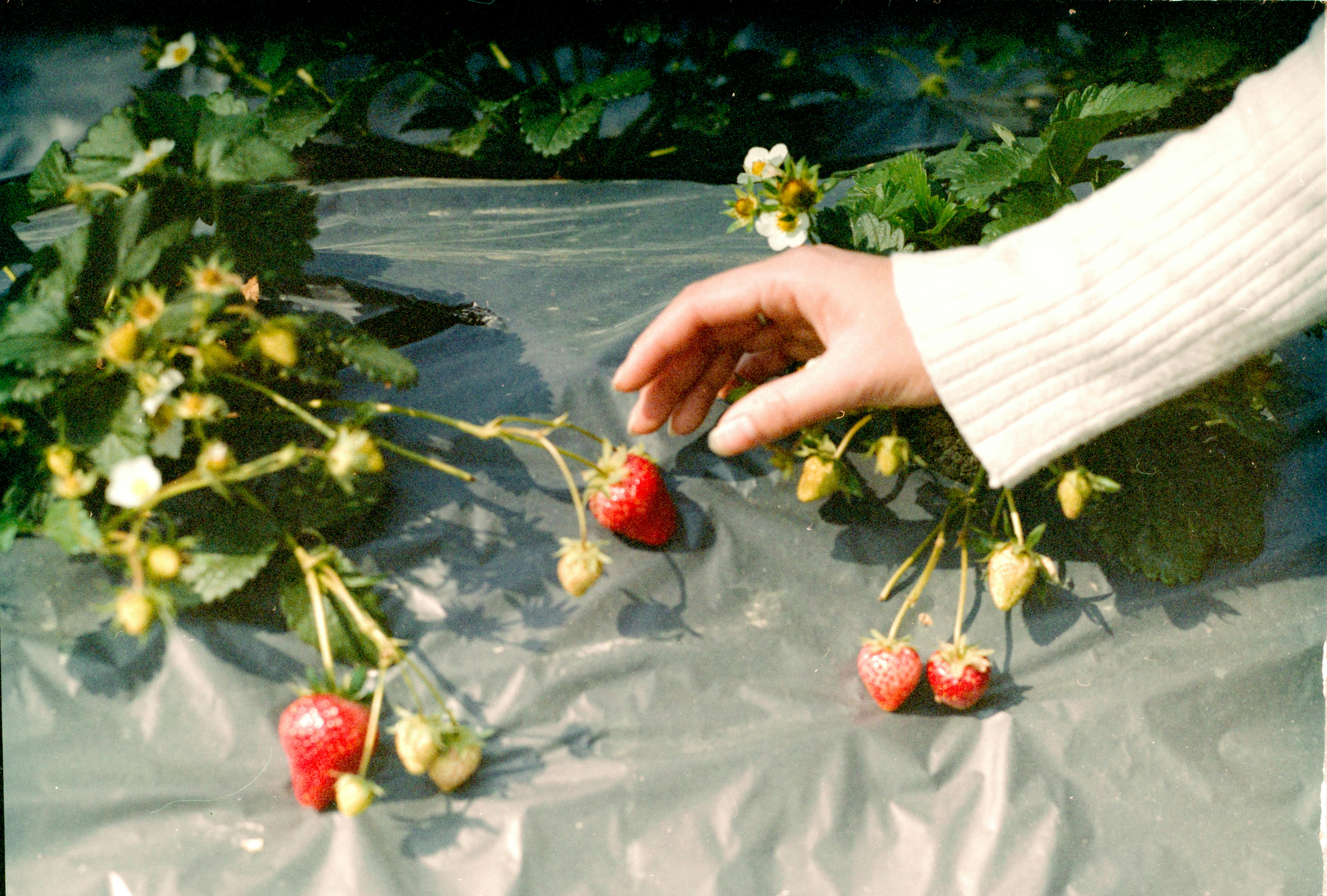Planting strawberries in raised beds can be a great way to produce delicious and nutritious berries. Raised beds are easier to maintain than traditional gardening methods, and they provide better drainage and soil aeration. With the right preparation, you can easily plant and grow strawberries in your own raised bed. In this guide, we will discuss the steps required to successfully plant strawberries in a raised bed, including preparing the soil, choosing the right variety of strawberry plants, and planting them correctly.The benefits of planting strawberries in raised beds are numerous. Raised beds promote better drainage and aeration of soil, resulting in healthier plants with higher yields. Raised beds also reduce the risk of soil-borne diseases, which can damage and even kill strawberry plants. Additionally, raised beds allow for easier maintenance of the plants, as they are easy to access from all sides. Additionally, the soil warms up quicker in raised beds allowing for earlier harvests. Finally, raised beds can help conserve water since less water is lost through evaporation, resulting in healthier plants with larger yields.
Preparing the Raised Bed for Planting Strawberries
Creating a raised bed is an ideal way to grow strawberries. Raised beds provide good soil drainage, faster warming of the soil in the spring, and easy access for maintenance. When preparing a raised bed for planting strawberries, there are several steps that need to be taken to ensure optimal growth of the plants.
First, it’s important to select a suitable location for the bed. The site should receive at least 6 hours of direct sunlight each day and have well-drained soil. The bed should also be away from trees or other sources of shade that could reduce the amount of sunlight reaching the plants.
Next, determine how large you want your raised bed to be and construct it accordingly. The size will vary depending on the available space and number of plants that will be grown in it. Once it is constructed, fill it with a mixture of topsoil and compost in equal parts. This will ensure that there is adequate drainage and fertility levels for your strawberries to thrive.
Finally, incorporate organic mulch into your soil before planting your strawberry plants. This will help retain moisture and keep weeds at bay while also providing nutrients to your plants as it breaks down over time. With these steps completed, you are now ready to plant your strawberry plants!
Choosing the Right Type of Strawberry for Your Raised Bed
When it comes to growing strawberries in your raised bed, there are a few things to consider. The type of strawberry you choose will depend on the climate you live in, the size of your raised bed, and how much space you have available. Here are some tips to help you choose the right type of strawberry for your raised bed.
The first thing to consider is climate. If you live in a warmer climate, then day-neutral strawberries are a good choice. These varieties produce fruit throughout the season and can tolerate warmer temperatures. If you live in a cooler climate, then June-bearing strawberries are a better option as they produce larger berries and have an earlier harvest window.
The size of your raised bed will also play a role when selecting your strawberry variety. Smaller beds may not be able to accommodate June-bearing strawberries due to their larger size and need for more room between plants. Day-neutral varieties are generally smaller and can be planted closer together, making them ideal for smaller beds.
Finally, consider how much space you have available for planting strawberries. If space is limited, then June-bearing varieties may not be the best choice as they require more room between plants than day-neutral strawberries do. On the other hand, if you have plenty of space available in your raised bed, then either type of strawberry can be grown successfully.
By considering these factors when selecting a variety of strawberry for your raised bed, you can ensure that you choose one that will thrive in your climate and provide an abundance of delicious berries throughout the season!
Planting Strawberry Plants in the Raised Bed
Planting strawberry plants in the raised bed is a great way to get started growing strawberries. Raised beds provide the ideal environment for strawberry plants, providing drainage, air circulation, and nutrient-rich soil. The raised bed will also keep your soil from becoming waterlogged and help protect your strawberries from disease. It is important to choose the right type of soil for your raised bed, as different types of soils can affect the health of your strawberry plants.
When planting strawberry plants in a raised bed, it is important to prepare the soil before planting. Start by removing any weeds or other debris from the area and loosening the soil. If necessary, you can add compost or other organic matter to enrich the soil before planting. Once you have prepared the soil, it’s time to plant your strawberry plants.
When planting strawberries in a raised bed, you should space them out about 12 inches apart so they have enough room to grow and spread out. Dig a hole that is about twice as wide as the root ball of each plant and deep enough that it will be level with the surrounding ground when filled in with soil. Place each plant in its hole and fill it with soil until it is level with the surrounding ground. Gently tamp down around each plant to ensure that there are no air pockets around its roots and water thoroughly after planting.
Once planted, mulch around your strawberry plants with straw or other organic matter to help conserve moisture and keep weeds down. Water regularly throughout their growing season and fertilize every month or so to promote growth and encourage healthy fruits. With proper care, you will be enjoying delicious homegrown strawberries before you know it!
Maintaining a Raised Bed Strawberry Garden
Maintaining a raised bed strawberry garden can be a rewarding experience for any gardener. Strawberries are an easy-to-grow fruit, and by using a raised bed, the gardener can create an optimal environment for growing them. Here are some tips for maintaining a successful raised bed strawberry garden.
The first step in maintaining a raised bed strawberry garden is to make sure that it has the proper drainage. Poor drainage can lead to root rot and other diseases in the plants. To ensure proper drainage, the bed should be filled with soil that is well aerated and contains organic matter such as compost or manure. The soil should also be mixed with sand or gravel to ensure good drainage.
The next step is to fertilize the plants regularly. Strawberries require nitrogen, phosphorus, and potassium to thrive, so these nutrients should be added throughout the growing season. Fertilizers are available at local garden centers, so it is important to select one that is suitable for strawberries. It is also important to monitor pH levels in order to ensure that the soil has enough acidity for the plants to grow properly.
It is also important to keep weeds under control in order to prevent them from competing with the strawberry plants for nutrients and water. Hand weeding or mulching with straw or landscape fabric can help keep weeds at bay. Regularly removing dead leaves and debris from around the plants will also help keep pests away and create a healthy environment for growth.
Finally, it’s important to prune the strawberry plants regularly in order to encourage new growth and increase yields. Pruning should be done in late winter or early spring before new growth begins, and should involve removing any old foliage as well as thinning out any congested areas of growth. By following these tips, gardeners can successfully maintain a productive raised bed strawberry garden!

Watering and Fertilizing Your Strawberry Plants
Proper watering and fertilizing of strawberry plants is essential for healthy, productive plants. Watering is important for keeping the soil moist and providing the plants with enough moisture to support growth. Fertilizing helps to ensure that the plants are receiving all the necessary nutrients for optimum growth. Here are some tips for watering and fertilizing your strawberry plants:
Water your strawberry plants regularly, especially during hot weather when they need the most water. Make sure to water them deeply so that the roots get enough moisture. When watering your strawberries, avoid getting water on the leaves as this can cause fungus or rot.
Fertilize your strawberry plants every few weeks with a balanced fertilizer such as 10-10-10 or 5-10-5. You may also want to use an organic fertilizer such as fish emulsion or seaweed extract. Apply fertilizer around the base of the plant, taking care not to get it on the leaves. Always follow label instructions when applying any type of fertilizer.
Monitor your strawberry plants regularly to check for signs of nutrient deficiencies or disease. If you notice any issues, adjust your watering and fertilizing schedule accordingly. With proper care, you can enjoy healthy, abundant strawberries in no time!
Controlling Weeds in a Raised Bed Strawberry Garden
Weeds can be a big problem in any garden, especially when it comes to strawberries. In a raised bed strawberry garden, weeds can take over and compete with the plants for water and nutrients, leading to poor plant growth and reduced yields. Fortunately, there are several methods for controlling weeds in a raised bed strawberry garden.
One of the best methods for controlling weeds is through regular monitoring and hand weeding. By inspecting the beds regularly, weeds can be spotted early on and removed before they become established. Hand weeding is also an effective way to remove weeds that have already taken root and are growing vigorously.
Mulching is another effective way to control weeds in a raised bed strawberry garden. A thick layer of mulch will shade out sunlight from reaching weed seeds and prevent germination. Organic mulches such as straw, grass clippings or compost are best for strawberry plants as they provide additional nutrients to the soil as they break down over time.
Cover crops can also be used to control weeds in a raised bed strawberry garden. Cover crops such as buckwheat or rye will suppress weed growth by competing with them for resources such as light, water and nutrients. Cover crops should be mowed down or tilled into the soil once they reach maturity to make way for planting strawberries.
In addition to these methods, herbicides may also be used to control weeds in a raised bed strawberry garden; however, herbicides should only be used when absolutely necessary due to their potential impacts on other plants and wildlife in the area. When using herbicides, always read and follow label instructions carefully for best results.
Overall, there are several methods that can be used to effectively control weeds in a raised bed strawberry garden. By monitoring the beds regularly, hand-weeding regularly, mulching heavily with organic materials, utilizing cover crops where appropriate and using herbicides if necessary, you can keep your strawberries free from competition from pesky weeds!
Pest Control for Your Raised Bed Strawberry Garden
Strawberry plants are vulnerable to pests and diseases, so pest control is essential for any raised bed strawberry garden. The best way to keep pests away is to maintain the health of your strawberry plants by providing them with proper nutrition and a clean environment. Here are some tips to keep pests away from your raised bed strawberry garden:
1. Keep the soil in your raised beds well-aerated and free of weeds. Remove any dead or decaying leaves and stems that could attract pests.
2. Monitor the plant closely for signs of pests, such as wilting leaves, discoloration or spots on foliage and fruit, webbing on the leaves, or strange-looking eggs on the stems or underneath the leaves. If you spot any of these signs, take action immediately.
3. Plant companion plants near your strawberry beds that will repel certain pests naturally, such as marigolds and chrysanthemums.
4. Introduce beneficial insects such as ladybugs, lacewings and parasitic wasps into your garden to help keep pest populations in check.
5. Use natural insecticides such as neem oil or insecticidal soap to help control any remaining pest populations in your garden. Make sure to follow directions carefully when using these products and apply them only when necessary.
By following these tips you can keep your raised bed strawberry garden free from pesky pests so you can enjoy a healthy harvest!

Conclusion
Planting strawberries in raised beds is a great way to provide the best growing conditions for this delicious fruit. With just a few simple steps, you can have a bountiful strawberry crop in no time. To ensure success, it is important to choose the right location for your raised bed, prepare the soil properly, water and fertilize regularly, and protect your crop from pests. With a little effort and some patience, you can enjoy freshly-picked strawberries all season long!
Harvesting your own strawberries is an enjoyable way to bring fresh produce to the table. By planting them in raised beds, you can provide optimal growing conditions for a successful crop. With proper preparation and ongoing maintenance, you can enjoy the fruits of your labor for years to come.



